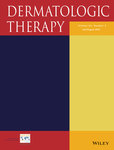“Azole menace”-An underappreciated trigger perpetuating the epidemic of antifungal therapeutic failure in cutaneous mycoses
Abstract
The South-Asian epidemic of anti-fungal therapeutic failures (AFTF) is on the rise. Although many demographic, environmental, and socioeconomic factors have been implicated in the genesis of this problem, two pharmacological issues warrant attention. While detailed discussions on the role of topical corticosteroid (TCS) in the changing landscape of the superficial mycotic infections in this region have been making headlines, another equally, rather more important pharmacological factor seems to have been undermined by the hype around TCS. The fastidious pharmacokinetic properties and related practical aspects of the triazole group of oral and topical antifungals, especially oral itraconazole seem to contribute significantly to the persistence of AFTF epidemic. In this paper, we shall discuss the broad aspects of the spectral precariousness of oral triazole antifungals with special emphasis to itraconazole, a concept known as the “azole menace” in the overall pathogenesis and tenacity of the AFTF epidemic.
CONFLICT OF INTEREST
The authors declare no potential conflict of interest.
Open Research
DATA AVAILABILITY STATEMENT
Data sharing not applicable - no new data generated. Its a short review of important concepts on one topic, which have never been discussed together in context.




